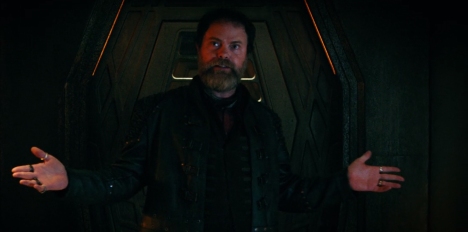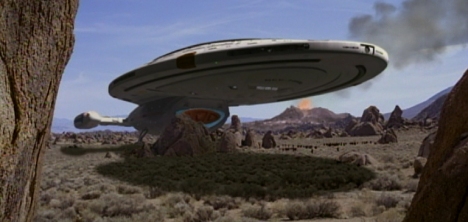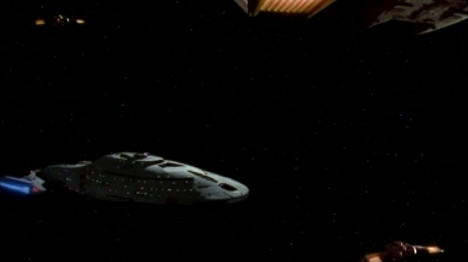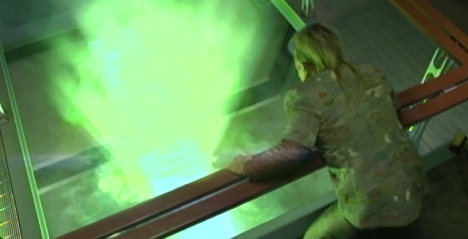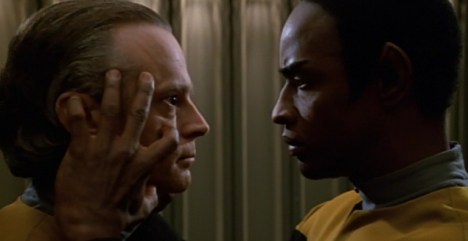During the production of the third season of Star Trek: The Next Generation, producer Michael Piller laid down a template for Star Trek storytelling that became a large (and underrated) part of the series’ successful. Following on from the unfocused and clumsy first two seasons, Piller advocated from a strong character-driven storytelling sensibility, advocating for a narrative structure whereby each episode would reveal or inform something interesting about a given character, quite apart from any phenomenon of the week or interesting alien species.
It was a template that was so sturdy that Piller himself could open the season by applying it to Wesley Crusher in Evolution. Ronald D. Moore was perhaps the first writer to really understand the appeal of the structure, applying it to Worf in The Bonding and Sins of the Father. Even when episodes weren’t about the main characters, they still offered some insight. Tin Man, Déjà Q and The Defector were both episodes focused on a guest star, but that guest star was largely seen through Data’s eyes.

Captain Kim.
There were stories that didn’t adhere to this template. Often, like in Hollow Pursuits and Yesterday’s Enterprise, they focused on a guest star rather than the leads. However, these episodes were the exception that proved the rule. Even the less successful episodes of the season, like A Matter of Perspective or Ménage à Troi were still elevated above the troubled first and second seasons by this attention to character-driven storytelling. Piller set a template that lasted for the next four seasons, and beyond.
In the middle seasons of Star Trek: Voyager, there was a tension between this template and the demands of contemporary television. The writing staff on Voyager understood the basic rhythms and structure of the template that Piller established, and kept applying it after his departure following Basics, Part I and Basics, Part II. Stories like Nemesis and Timeless found a way to apply that template to even neglected characters like Chakotay and Kim. The only issue was that the template felt increasingly outdated.

He’s (Nee)lixed.
Modern television was moving on. The X-Files and Babylon 5 were embracing sprawling epic television storytelling. Television series like The Sopranos and Oz were adopting a more novelistic approach to the medium. Even Star Trek: Deep Space Nine was consciously moving away from self-contained episodes in favour of longer-form storytelling, most notably the six-parter that ran from A Time to Stand through to Sacrifice of Angels. There was a sense that, even applied skillfully and correctly, the Piller template reflected an older mode of television storytelling.
One of the big issues with the seventh season of Voyager is a palpable feeling that even this foundational block of Star Trek storytelling dating back to The Next Generation has begun to erode. The seventh season of Voyager is packed with stories that look and feel loosely that familiar Piller template, broad narratives focusing on individual characters and big ideas wherein the characters develop or discover something about themselves. However, these episodes also tend to look like they were constructed from a faded photocopy of that classic blueprint.

In-tractor-able.
This is reflected in the broad “Star-Trek-iness” of stories like Drive or Critical Care, episodes that gesture toward social commentary while working hard to avoid actually saying anything potentially engaging. It is also reflected in character-driven episodes like Imperfection or Body and Soul, which superficially resemble the template that Piller laid out for telling a good self-contained Star Trek story, but failing to connect all of the pieces in a way that makes any real sense.
Nightingale is perhaps the season’s best example of this, for so many reasons. It is the last Voyager episode to focus on the character of Harry Kim, but returns to what has been his standard character arc since Demon. It has a strong central throughline about the importance of taking command, and the responsibilities of being in authority, but it also never allows these elements to cohere into a strong central thesis. It contains stock Star Trek elements like an alien war and the challenge of non-interference, but doesn’t do anything with them. It is simply a mess.
Filed under: Voyager | Tagged: andré bormanis, Arc, character, harry kim, Michael Piller, Narrative, plotting, star trek, star trek: voyager, storytelling, voyager | 3 Comments »

















